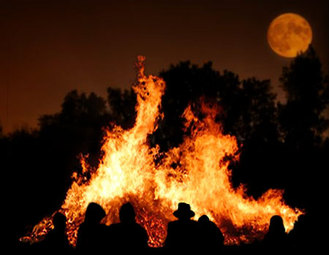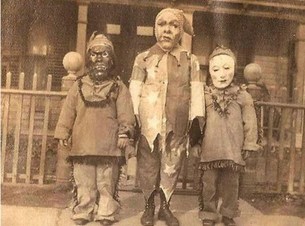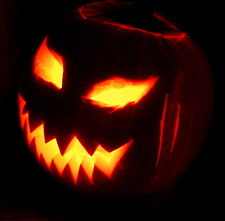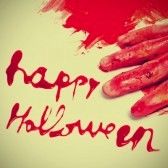I had intention on having this blog up a couple weeks ago but life has its way of keeping you busy. So without further adieu let's dive in and see where getting dressed up and going door to door for candy comes from.
Modern day Halloween has centuries-old roots that go back to the Celtic celebration of Samhain, one of the 2 most important observances to the Celts, marking the harvest and the beginning of a new cycle. They believed that on this day the veil between the worlds of the living and the dead was at its thinnest and ghosts were able to mingle among us. All manner of supernatural creatures were thought to be out and about at this time, including ghosts, fairies, and demons.
All the fires at home had to be extinguished. The people would gather and lit bonfires to honor the dead, as well as to keep them away. They offered sacrifices that symbolized their wishes. Afterwards they would light torches from the fire to take home and re-light their home fires with in order to have a prosperous season the next year. During the celebration they would dress up in animal skins and attempt to tell one another's future.
Modern day Halloween has centuries-old roots that go back to the Celtic celebration of Samhain, one of the 2 most important observances to the Celts, marking the harvest and the beginning of a new cycle. They believed that on this day the veil between the worlds of the living and the dead was at its thinnest and ghosts were able to mingle among us. All manner of supernatural creatures were thought to be out and about at this time, including ghosts, fairies, and demons.
All the fires at home had to be extinguished. The people would gather and lit bonfires to honor the dead, as well as to keep them away. They offered sacrifices that symbolized their wishes. Afterwards they would light torches from the fire to take home and re-light their home fires with in order to have a prosperous season the next year. During the celebration they would dress up in animal skins and attempt to tell one another's future.
Then the god-fearing Christians made their way into what is now Ireland, the UK, and northern France where the Celts lived. The missionaries were instructed to try and adapt the native's existing beliefs into coexisting with Christian notions. Samhain was renamed All Saint's Day, to honor those who had passed away that year, along with all the saints. The church branded Celtic beliefs as evil, and those who continued to follow the old way were branded witches or went into hiding.
All Saint's Day, or All Soul's Day became All Hallows, meaning sanctified or holy. The evening prior to this was believed to be the time for the most supernatural activity, and came to be known as All Hallow's Eve, which finally became Halloween.
Trick or Treating
During the All Soul's Day festivities, the poor would go from house to house and beg for food. They were given "soul cakes" in return for offering up prayers for the family's lost loved ones. The offering of these cakes was encouraged by the church to replace the leaving out of food and wine as offerings for the wandering ghouls lurking about on that night. The practice became known as "going a-souling" which evolved in time as children went around the town asking for food and money, and eventually became what we know today as trick or treating.
Going a-souling or trick or treating while wearing costumes dates back to the Samhain festivals in which the people would wear animal skins and skulls. The costumes were meant to trick the actual supernatural beings that were out walking among them on this night.
All Saint's Day, or All Soul's Day became All Hallows, meaning sanctified or holy. The evening prior to this was believed to be the time for the most supernatural activity, and came to be known as All Hallow's Eve, which finally became Halloween.
Trick or Treating
During the All Soul's Day festivities, the poor would go from house to house and beg for food. They were given "soul cakes" in return for offering up prayers for the family's lost loved ones. The offering of these cakes was encouraged by the church to replace the leaving out of food and wine as offerings for the wandering ghouls lurking about on that night. The practice became known as "going a-souling" which evolved in time as children went around the town asking for food and money, and eventually became what we know today as trick or treating.
Going a-souling or trick or treating while wearing costumes dates back to the Samhain festivals in which the people would wear animal skins and skulls. The costumes were meant to trick the actual supernatural beings that were out walking among them on this night.
Jack O'Lanterns
The story of the first jack o'lantern starts with a fellow named Jack. There are a few variations, but they all agree that Jack meets the Devil and tricks him into not taking his soul. Upon his death Jack was deemed to mean to get into heaven, but because of the trick he played on the devil, he can't go into hell either. With no where to go and doomed to wander around for eternity, the devil tossed Jack an ember from the fires of hell. He placed it inside a hollowed out turnip to light his way in the dark.
People began carving turnips and then pumpkins and placing candles in them to scare away Jack and any other wandering beasty that happened to creep up on All Hallow's Eve.
Halloween Comes to the New World
Halloween celebrations in colonial America were extremely limited because of the rigid Protestant belief system. The melting pot of a nation saw the traditions and beliefs of colonists mesh with those of its immigrants as well as Native Americans. Early celebrations included dancing, singing and eating. Neighbors would gather to tell stories about the dead and attempt to tell one another's futures.
In the late nineteenth century Irish immigrants fleeing to the New World to escape the potato famine back home helped to popularize the Halloween celebrations. This is when Americans, taking from Irish traditions, began to dress up in costumes and go from house to house asking for food.
Modern Halloween has became a holiday for children as well as adults who dress up like every manner of ghastly creature and mock and tease the spirits of the dead. In so doing, they are reaffirming death and its place as a part of life in an celebration of a holy and magic evening. Be vigilant tomorrow as you go about your business, mischievous or not, as the thin veil between worlds may allow ghouls to wander into your path!




 RSS Feed
RSS Feed